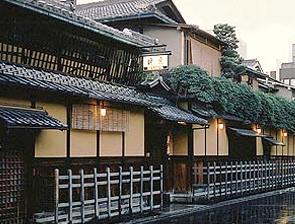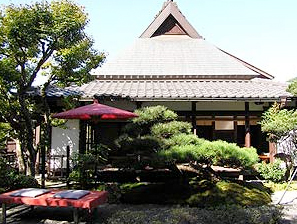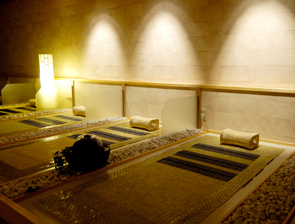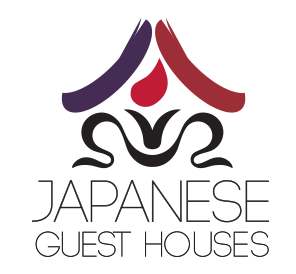Hot springs have a very long history in Japan, and they are an intimate part of Japanese culture. There are over 3,000 "onsen" ,or hot springs, in Japan. Many can be found at the ryokans available on Japanese Guest Houses.
Popular Destinations
Kyushu
Hokkaido
Kansai
Tohoku
Shikoku



If you are thinking about staying at a Japanese ryokan, here is a list of questions and answers which may help you better plan your stay:
This question will really determine the locations you should visit. Do you want to see modern Japan like Tokyo and Osaka, cultural Japan like Kyoto and Nara, Old Japan like Tsumago/Magome or Shirakawa-go, spiritual Japan like Mt. Koya, or a combination of the above? Is visiting a Hot Spring (onsen in Japanese) important to you? You can also get off the beaten path and discover your own Japan. Whatever you want to do Japanese Guest Houses can help you find a ryokan for you in that area.
For more ideas on planning your trip, please see sample routes.
The peak tourist seasons in Japan are in the spring (March/April) and in the fall (October/November). If you are planning to go in the spring or fall, then you should book your ryokan room months in advance. Remember, there are 123 million people living in Japan and you are also competing with them for ryokan vacancies. In the most popular tourist destination, like Kyoto, entire ryokans are booked years in advance by school trips in the spring and fall and it is very difficult to find vacant ryokans. However, in other less popular destinations, there are ryokans with vacancies. If you are planning to go in the spring or fall, it may be a good idea to stay at a ryokan in a less popular destination and stay in a hotel in a popular destination like Kyoto. Another idea is to visit Japan in the offseason. Compared to many places in North America and Europe, the Pacific Coast in Japan has very mild winter weather, and December, January, (except for the very busy New Year holiday season which runs from around December 28 to January 4) and February are good months to visit Japan. From mid-May to June and September are also good times to visit although the summer months of July and August can be very hot and humid (except in Hokkaido which is a very popular destination for Japanese during this time of year). If you wish to stay at a ryokan in a popular destination, then you would have a better chance of booking a room in the winter, late spring, early fall, or else book months in advance.
If you are traveling in a group of 2, 3, or 4 people then you have a better chance of making a ryokan reservation. Ryokans are reluctant to accept single travelers for the simple reason that they charge on a per-person basis, not on a per room basis. They prefer having 2 or more guests stay in a room than having only 1 guest in a room. Indeed, many ryokans simply do not accept single travelers. Our advice: if you plan to stay at a ryokan please try to stay with at least 2 people.
How much does it cost to stay at a ryokan? A better question is “how much would you like to pay?” Our least expensive ryokans are the Category D ryokans which charge between 7,000 and 10,000 yen per person. The most expensive ryokans are the Category A+++ ryokans which charge from 70,000 yen per person and more. In other words, for 2 guests a 1-night stay in a Category D ryokan would cost between 14,000 and 20,000 yen. For 2 guests in a Category A+++ ryokan, the price would start from 140,000 yen per night. If you are a single traveler, you will be paying more per person than if you are traveling in a group of 2 or 3 people.
There are many different kinds of ryokan accommodation available. For example minshukus, standard ryokans, modern ryokans, traditional ryokans, luxurious ryokans, and ryokan hotels. There are other types of traditional accommodation such as Buddhist temples and “gassho-zukuri” (thatched gable roof farmhouses). Please take a look at our Ryokan Styles page for a detailed description of each type of ryokan and traditional accommodation.
If you are looking for luxury ryokan accommodation, then you should consider such places as Shuzenji, Hakone area, Mt Fuji, or Kurokawa Hot Spring. If you are looking for less expensive accommodation, then there are many Category D ryokans (7,000 to 10,000 yen per guest) available throughout Japan. Some of the ryokans are very good while others offer only the most basic facilities. The best way to judge the quality of the ryokan is to read the “Guest Comments” and “Guest Rating” and to look at the “Guest Photos” at the bottom of many of the ryokan pages. The inexpensive, rustic type of accommodations in such places as Tsumago/Magome, Shirakawa-go, and Mt. Koya are highly recommended for travelers looking for an authentic, traditional Japanese cultural experience. If you want authenticity but with a bit more luxury then Miyajima, Kanazawa, Kurashiki, or Takayama would be ideal choices.
If you have never been to Japan, then you may think this country is simply one large urban sprawl. While there are many large Japanese cities, there are also some very picturesque rural areas well worth visiting like Rural Kyoto. With the extensive and efficient train system, it is also very easy to explore rural Japan. From Tokyo, for example, it is only a 2 to 3-hour train ride to such areas as Nikko, Hakone, Mt Fuji, Shuzenji, Takaragawa Onsen, or Yudanaka Onsen (where you can see bathing snow monkeys in the winter).
Another point worth mentioning is the city of Kyoto. Although Kyoto is portrayed as a destination full of temples, shrines, gardens, and castles (which is true) it is also a very large, and busy city. If you are looking to stay in a quiet area in Kyoto, then do not stay in central Kyoto but try to stay in Rural Kyoto instead.
Although there are many hot spring areas (onsen in Japanese) in Japan, not every major tourist destination has hot spring facilities. The best hot spring areas are located in more rural settings where you can unwind and just relax. We recommend spending at least 1 night in a hot spring ryokan while in Japan.
Many ryokans include both breakfast and dinner in their per-person price. However, some ryokans only offer breakfast and others do not offer any meals at all. The quality of the cuisine varies depending on the ryokan. In general, the more expensive the ryokan the better the quality of food served. Many of the nicer ryokans serve “kaiseki” which is a traditional, multi-course dinner. However, there are so many exceptions and previous guests have often raved about the high quality of the food served at the cheaper ryokans. For a better idea of the quality of food, please read “Guest Comments” by previous guests at the bottom of many of the ryokan pages. If you would like to know more about ryokan cuisine, please see our explanation of Japanese Kaiseki (Traditional Dinner). If you have any meal requirements then see our Cuisine pages for the food definitions that we use.
If you want to stay at a ryokan on the weekend but it is fully booked you might want to change dates to a weekday when ryokans often have vacancies. Also, keep in mind that in Japan everyone has the same holiday schedule, and if you can avoid these holiday periods then you should have better luck.
The 3 major holiday seasons to are:
During these holiday seasons, ryokan accommodation prices increase and rooms have been booked well in advance.
Another busy season is School Trip Season, which occurs in spring and autumn in popular tourist destinations such as Kyoto and Nara. Thousands of school children arrive from all over Japan to go sightseeing and learn first-hand about their cultural heritage. During this period many of the ryokans are fully booked, and it is often very difficult to find accommodation.
Here is a list of national public holidays in Japan:
Hyogo-ken Chijitoroku Ryokogyo 3-609
(Hyogo Prefecture Travel Agent License Number 3-609)
10-5-401-1-(2) Sakae-machi, Kawanishi-shi, Hyogo-ken Japan
Part of the Rediscover Group of Travel Companies Rediscover Japan Co., Ltd. (Japanese Guest Houses)
Website Design & Marketing by: Douglas Marketing Group

